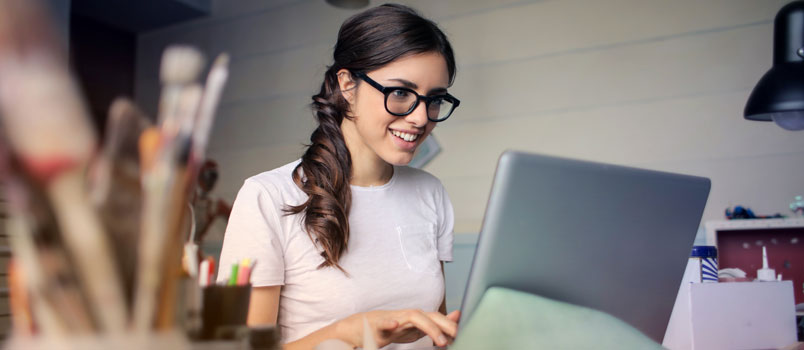Whether you’ll be working remotely or simply want a space to concentrate on your next brief, a home office is a great addition to the home. You can instantly transform your spare room or empty corner into something incredibly useful with just a few pieces of furniture. Working from the comfort of your own home comes with a multitude of benefits, including the fact that you don’t have a stressful commute ahead of you.
Of course, you must resist any distractions that are around the home, which is why having a dedicated, professional workspace rather than just sitting down in front of the TV. Here are a few ways that you can turn any spare space into a designer’s dream home-office.
Choose your area
As mentioned, you can utilise your spare room by turning it from a storage space into an office – but what if you don’t have one? Your best bet is to find a corner that you can segregate from the rest of the room with a divider. Using one will prevent temptation when it comes to watching television or getting distracted by another device, and will help create a dedicated working space.
If you have a bedroom or dressing room, consider setting up your office there rather than enduring the typically loud nature of a living room. You could always set up in a refurbished garage or outdoor office, too, should you have little space to spare in the house itself.
Consider what you need
The essential items for your business will largely depend on what type of design you do, although the basics should be a computer, a desk phone, a printer and stationery. Stock up on ink or toner from the likes of Toner Giant as well, to ensure you don’t run out mid-project as this can cause a significant delay in your work. Having a good quality printer is important, as it will allow you to see what your designs will look like off of the screen.
Consider what you need specifically as a designer; if you do your own photography, for example, you’ll need a high-quality camera and lighting, whereas solely digital designers will require different software.
Either way, many designers find it easier to use two screens rather than one to look at their briefs or inspiration without closing their own document. Don’t forget some nice extras to make the office nicer to work in – prints, plants and motivational quotes are sure to get you in a better mindset to work. You are a designer, after all, so get creative with the space.
Invest in storage
Keeping your working space organised is even harder when it’s in the home. Items can easily go missing if you don’t have dedicated storage solutions, especially things like stationery and paperwork. This could include floating shelves around the perimeter of your workspace, a mini filing cabinet for client documents and a desk with built-in storage. A filing cabinet, while considered ‘old-school’, is great for keeping essential draft designs, client information and briefs – you can’t always rely on technology, especially when you have projects to complete.





